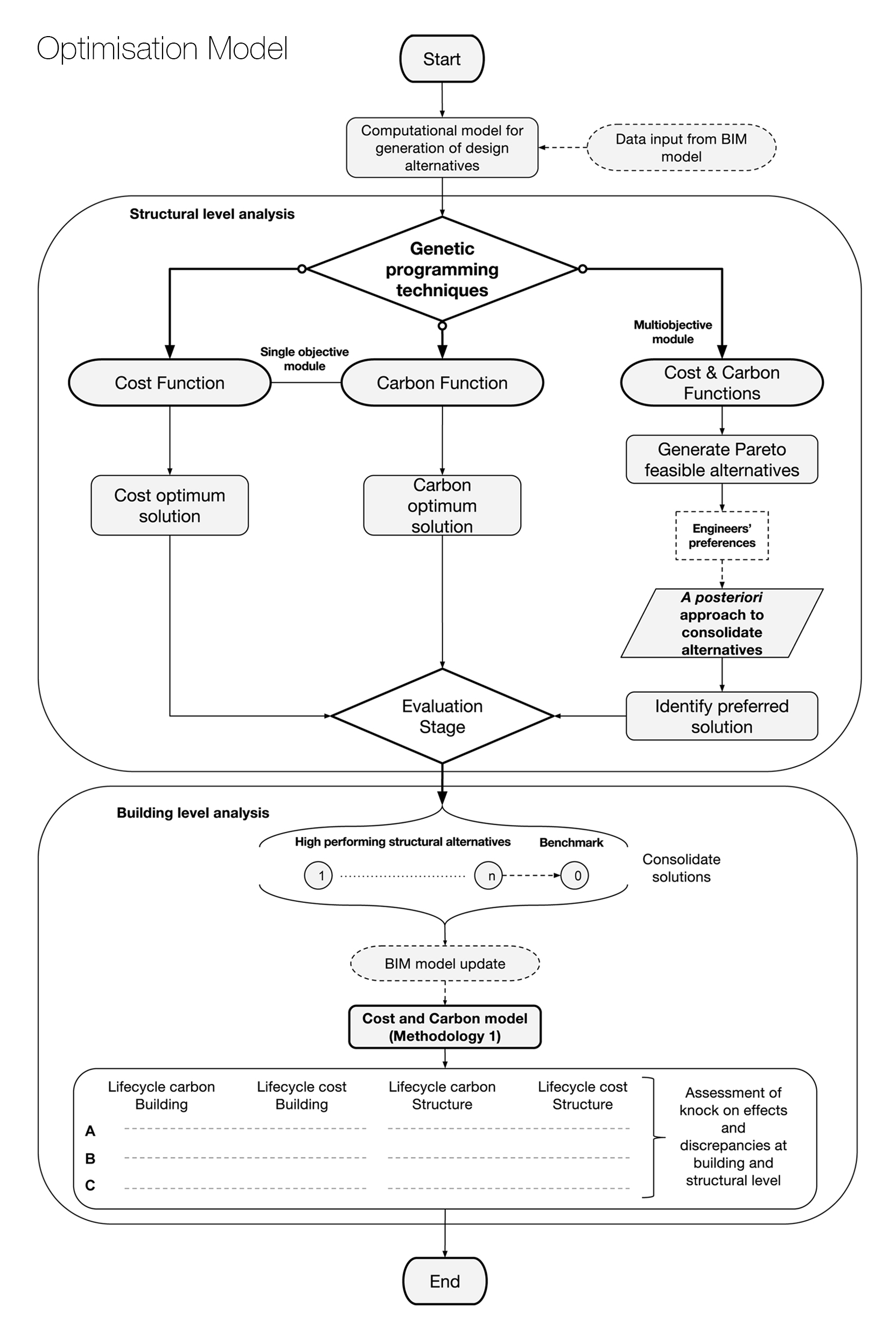Decision-based engineering
Decision-based engineering approach for material, cost and carbon efficiency in building structures
2013 cohort: Stathis Eleftheriadis' EngD project
 Building structures involve various conflicting design objectives that need to be optimised or adequately managed early in the design process. The raising concerns in life cycle sustainability of buildings further complicate the selection of the appropriate structural system. Recognising trade-offs between material use, carbon and cost efficiency has been a major challenge for engineering practitioners and researchers. In addition, the design and delivery of building projects brings together decision-makers from different sectors and backgrounds.
Building structures involve various conflicting design objectives that need to be optimised or adequately managed early in the design process. The raising concerns in life cycle sustainability of buildings further complicate the selection of the appropriate structural system. Recognising trade-offs between material use, carbon and cost efficiency has been a major challenge for engineering practitioners and researchers. In addition, the design and delivery of building projects brings together decision-makers from different sectors and backgrounds.
Decision-makers’ preferences can completely alter the design of structural systems towards sub-optimum alternatives. Thus, both the quantitative and qualitative components of the decision-making process need to be considered when addressing cost and carbon components to better understand where trade-offs could be obtained. Currently there are no systematic procedures that effectively consolidate those aspects in structural engineering. However, the developments within information technologies such as Building Information Modelling (BIM) offer opportunities that could augment the decision rationale by enriching the current practices with sustainable indexes.
Key questions emerged: what are the determinants of lifecycle cost and carbon of building structures and how these can be used to establish optimised structural alternatives; how the preferences of decision-makers influence the final selection of optimum structural alternatives? What are the knock-on effects of optimised structural alternatives at the cost and carbon performance at building level?
Our studies were carried out accordingly: development of a multilevel computational model for cost and carbon optimum structural designs using genetic programming that obtains lowest (overall) monetary cost, lowest carbon cost, best compromise between monetary cost and carbon cost. Application and validation of the optimised framework by analysing real case studies – multi-storey buildings. For the example buildings, other aspects of building performance are investigated to ensure that the systems proposed for lowest cost, lowest carbon or best cost-carbon compromise do not have any unforeseen adverse effects on other aspects of the whole building’s performance such as operational energy/costs. The knowledge and data gained from developed analysis models are distilled in a BIM-based decision support application that facilitates more informed structural design decisions. The proposed application could be used during the early stages of design development by design teams in order to augment decision-making procedures towards sustainable and cost effective buildings’ structures.